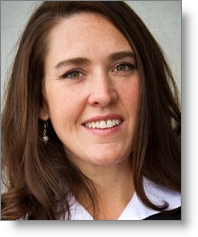
In her post, Jennifer suggests four steps (my comments after the bold):
1. Have a system for dealing with the business cards ASAP. I think “system” means process…. whether you have technology (like JibberJobber) or not, you need to have a process. My old process was to put a rubber band around the stack of business cards and put them in my desk…. not to be disturbed for months (when I coudln’t make heads or tails of any card). I even had a CRM, but it wasn’t a part of my business card process. What is your “system?” I suggest it isn’t “hide them in a dark, cold place right away!”
2. Connect with each person on LinkedIn. I’m on the fence on this one. Typically, I say that you should be very careful of this being your “first” contact with them. Obviously, to have gotten the card, you’ve already had a at least one communication. I think when you reach out after the event, though, you are almost starting over. You should remind them who you are, and maybe what you talked about. I think you can group your cards into two categories: (1) I don’t really care about this person, but I’m interested in connecting just to see who else I can meet through them, and (2) I really should nurture a relationship with this person. I encourage you to focus your time on getting cards and having conversations with the #2 people! Don’t waste too much time on #1 people! Anyway, as long as you recognize that getting a LinkedIn connection is not the ultimate goal, go ahead and connect with people. Too often, though, it becomes the final communication. Don’t let that happen.
3. Arrange follow-up meetings, where applicable. Going back to my #1 person or #2 person, you should hope to have a lot of people you want to follow-up with. For some this will be a phone call, for others it will be an email, or face-to-face… but start to stay in touch. The concept of “nurturing a relationship” is that there are multiple touch-points… which means that your follow-up will not be a one-time thing in your relationship. Start somewhere, and let it grow from there. Even if you feel uncomfortable making that first phone call (we all do).
4. Add these contacts to your tickler system. Tickler System must be Jennifer’s hidden code phrase for JibberJobber. Add these people to JibberJobber. JibberJobber is your tickler system. I find it interesting that she says to add them to LinkedIn, which a lot of people think is their contact system, and then says to add them to your tickler system. This is because LinkedIn is NOT your tickler system. It is a social network that has pros and cons. A “tickler system” is your roladex… it has private information and notes that you enter and track. When I was at the FBI they talked about “tickler” files. This was something that would somehow remind you of something you needed to do later. It “tickles” you. I’m not going to beat a dead horse here, but you need to put enough contact info (first name, last name, email, perhaps company) into JibberJobber, and create an Action Item to follow-up with them next week, or each quarter, or whatever, so you can nurture the relationship.
Great tips from Jennifer – are you doing any of them? Are you purposefully networking?
